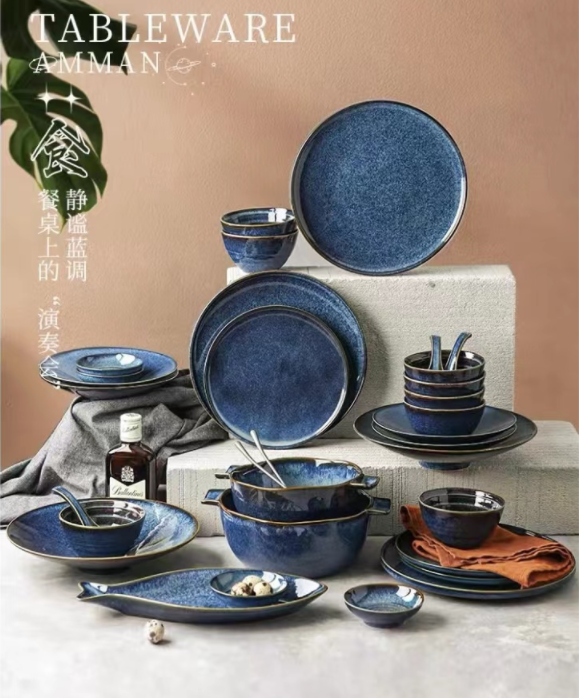What is the difference between color glaze and underglaze
As we know, color glazes and underglazes are two of the more common types in ceramic tableware nowadays. So the question is, do you know what the difference between color glaze and underglaze ? How to distinguish the advantages and disadvantages of color glaze ?
Difference between color glaze and underglaze
The difference between the two is mainly reflected in the process. Color glaze, which consists of a high-temperature colored vitreous body masked on the blank. Underglaze, has a dress-up pattern between the vitreous body and the blank, with the advantages of intact color and long-lasting, such as blue -and -white porcelain & underglaze porcelain, etc.
How to distinguish the advantages and disadvantages for color glaze
1, there are many color glazes on the market today, it is recommended that use white, not use too bright color, such as big red, sky blue or dark green. Because most of them are colored by heavy metals, although the glaze is sintered at high temperature, it is not safe to put the soup at high temperature for a long time, because acid and alkali will strengthen the separation of metal ions, so it is not recommended to use it.
2. For smooth surface, such as glass glaze and underglaze color ceramics, the separation of heavy metals is little or almost zero, so you can rest assured to use. However, for the glaze color with uneven surface, it is recommended to select as few surface patterns as possible.
3. Secondly, you can touch the overglaze ceramic with your hand, and the surface will show a concave convex feeling, and the unevenness can be seen by the naked eye. Of course, if you feel uneasy about the purchased product, it is recommended to soak it in vinegar for several hours. If the color change is very obvious, you are not recommended to use it.
4. We should pay attention to whether the color of the pattern is bright when we buy the glaze color. If it is not bright, it indicates that the dissolution amount of heavy metals is high. If conditions permit, it is recommended to use lead-free glazed tableware, such as porcelain bone porcelain, which does not contain heavy metals and is not easy to wear, and can be used in microwave ovens.

